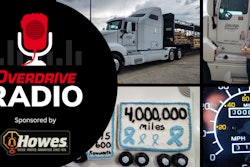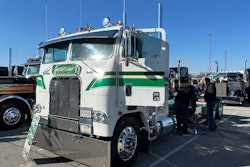The SafeTrac alerts the driver when his truck moves from the lane center.
Far too many truck drivers die when fatigue overwhelms them while they are behind the wheel. Now technology may be on the verge of saving some of those lives.
Federal statistics indicate that more than 200 truck drivers a year die from fatigue-related accidents. Many more are injured or cause injury and death when they are overtaken by fatigue. To stem this tide, a small army of sleep researchers and scientists work constantly to develop technology that warns drivers of their level of fatigue and of the performance degradation it causes.
According to Dr. David Dinges, a leading sleep reseacher at the University of Pennsylvania, “efforts to develop fatigue management technologies that are useful in the real world are not ready for prime time.” Even though research has been ongoing for years, Dinges believes the science is still in its infancy and “there is no single device as yet,” which has met the scientific criteria for effectiveness and accuracy.
Nevertheless, the field is crowded with dozens of devices, only some of which have application for driving. These devices have provided researchers with three promising technologies on which to concentrate testing. Dinges is strong in his opinion that while these devices may hold the key to future success, help may also come from some as-yet-unheralded device. But right now, the three devices under scrutiny in a joint U.S.-Canadian study involving one American and one Canadian fleet, are the:
SafeTrac is a vision-based lane tracking system developed under DOT sponsorship by AssistWare Technology and Carnegie Mellon University. The unit is a small oblong box that can be mounted on the dash or headliner. It has two readouts that alert the driver when his vehicle moves from the lane center. Dean Pomerleau at AssistWare says there are two distinct functions tied to these readouts. The drowsy driver function tracks a driver’s lane centering in rolling eight- to 10-minute periods and reads out a numeric score of performance on a constant basis. If this “alertness score” drops below a certain number, the driver is audibly warned. Using the same concept of lane tracking, another readout will tell the driver instantly if he approaches the berm or center line too closely.
Pomerleau says the difference between these two functions is time. The drowsy driver alert creates its score by recording a baseline of driver performance and then tracking lane centering against it.





